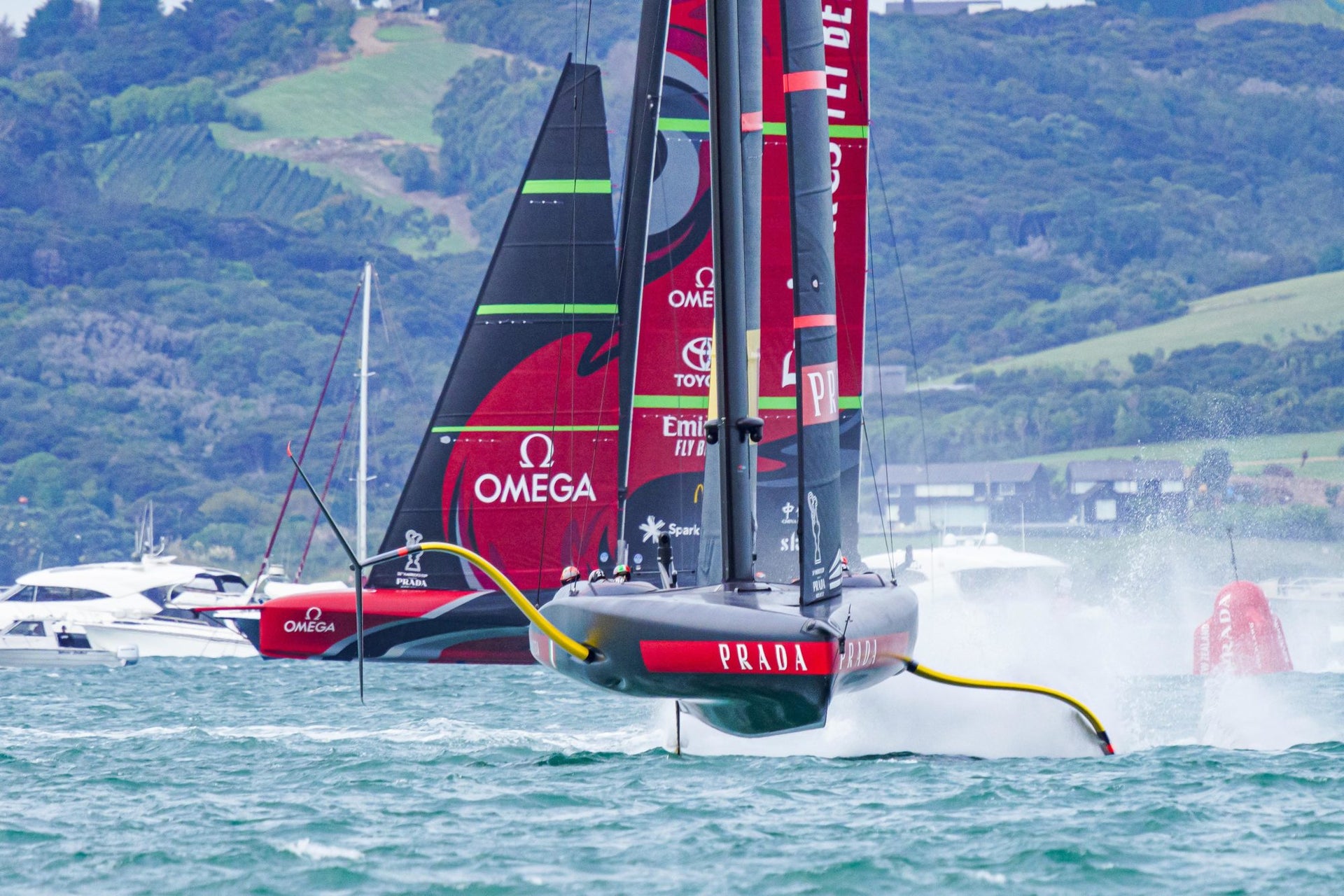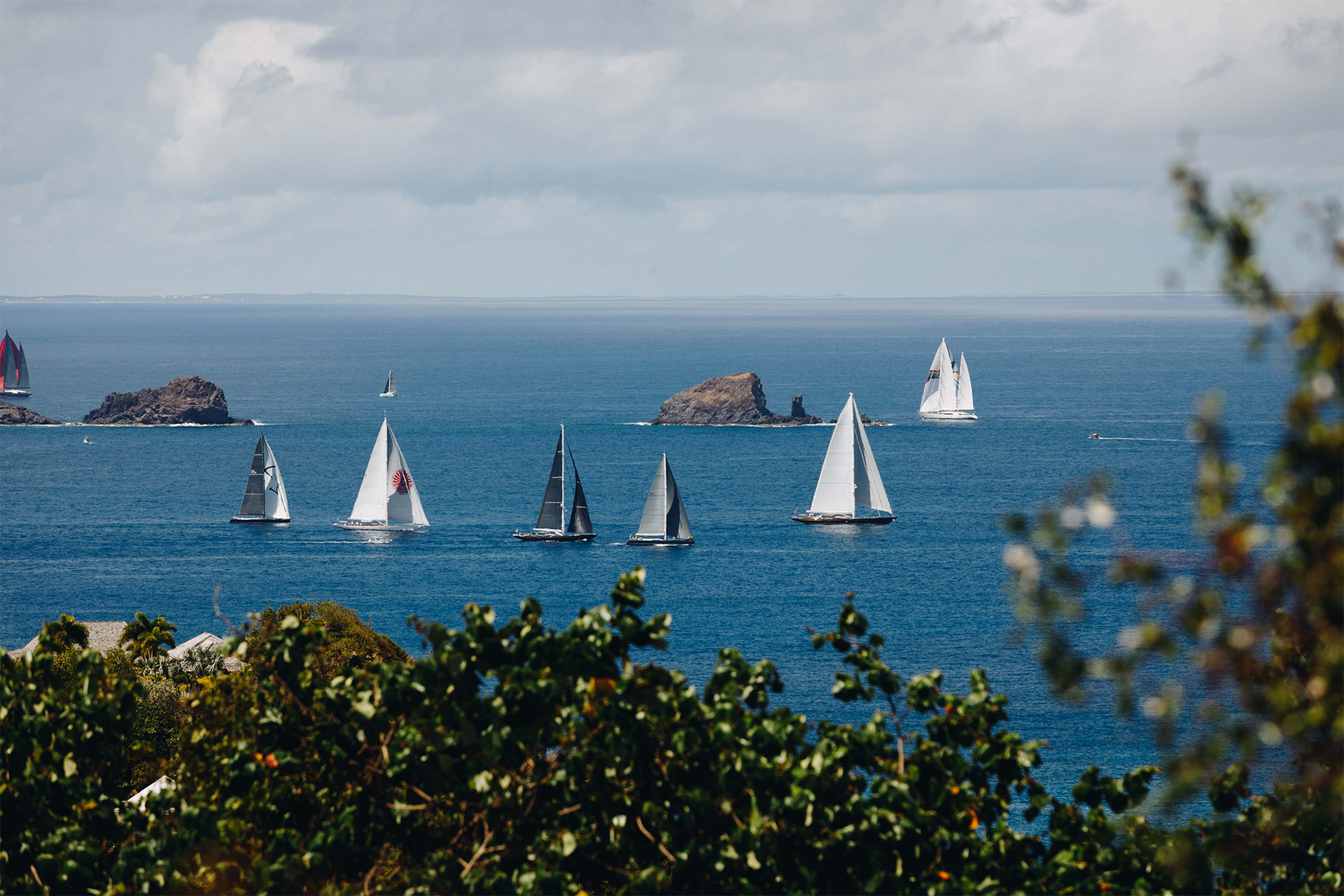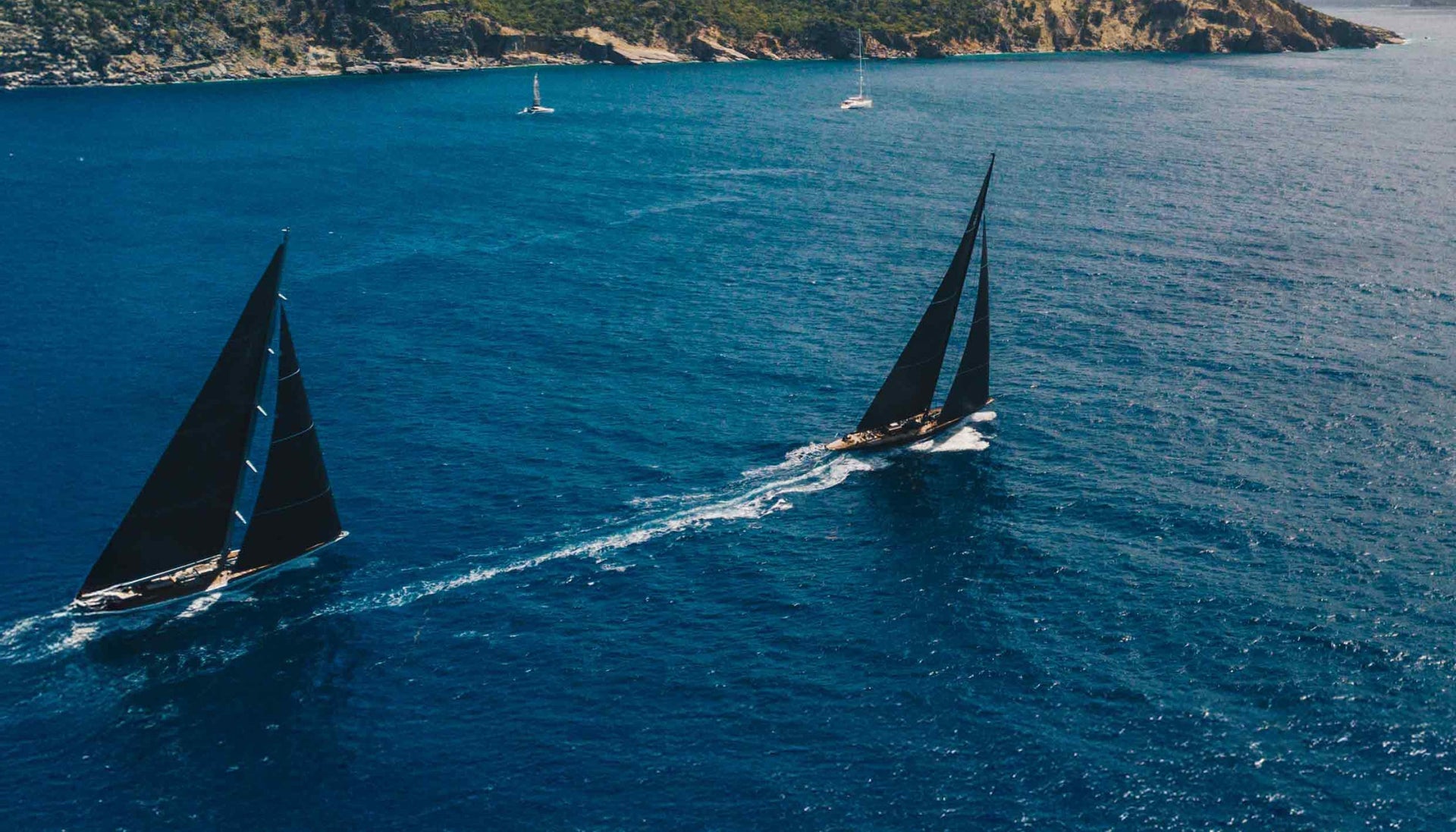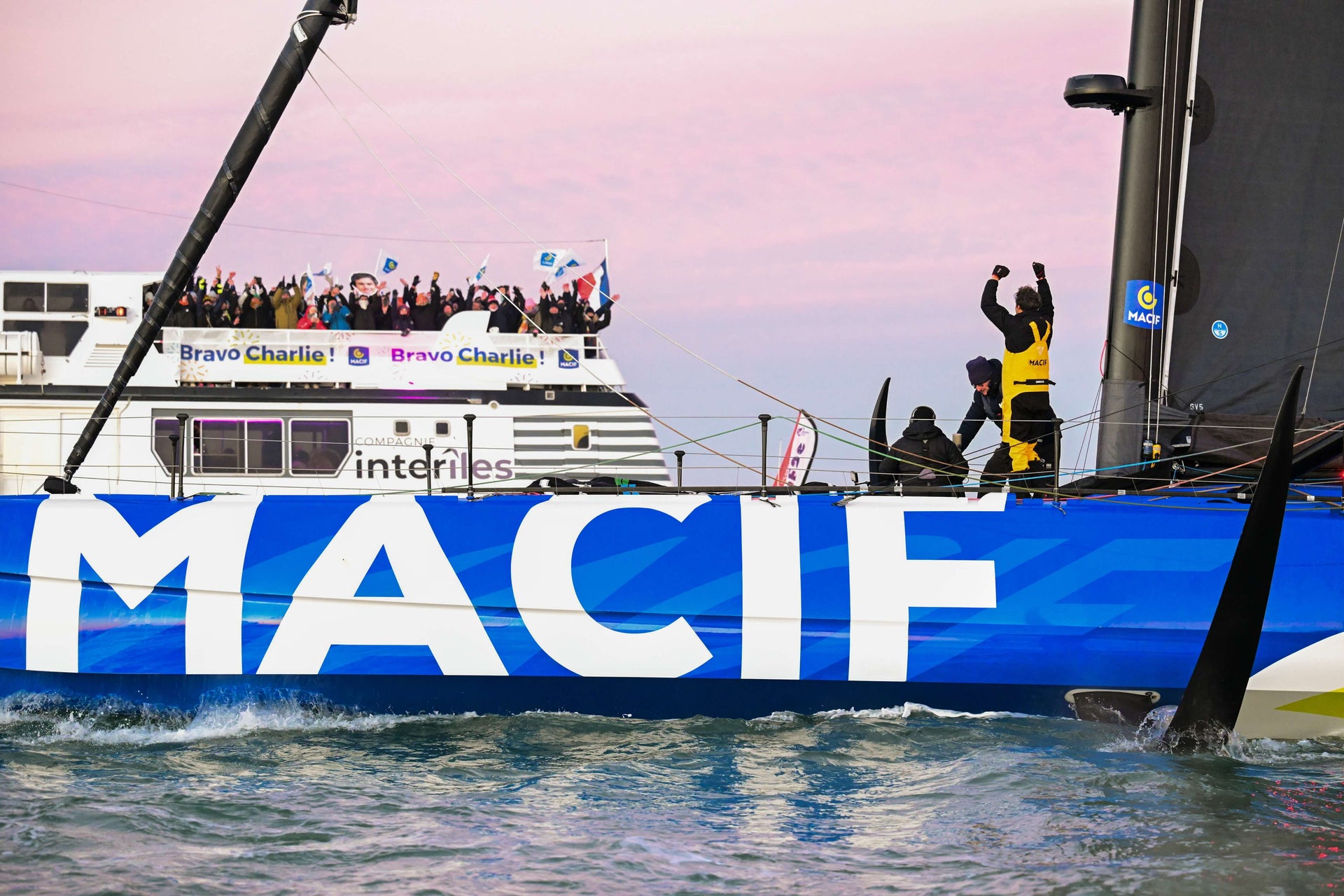LET'S TALK ABOUT SAILS: AMERICA'S CUP MATCH DAY 1
LET’S TALK ABOUT SAILS: 36TH AMERICA’S CUP MATCH RACES 1 & 2
Two design philosophies, two sail trimming strategies

North Sails and INEOS TEAM UK sail designer Gautier Sergent indulges us once again with his take on the 36th America’s Cup opening races, and the crucial role played by the AC75 sails on that global stage.
He’s prudent – the racing has just started and he knows first-hand the road ahead can be long. “The first day of the Prada Cup between INEOS TEAM UK and Luna Rossa Prada Pirelli was a bit similar, and we know how that ended. Let’s see what happens next.
“But it’s not night and day between the teams, that’s for sure.”
What’s interesting, Sergent notes, was to see each of the teams’ philosophy shine so bright on Wednesday in Auckland. There was no big surprise, no “rabbit pulled out of a hat,” as he puts it. But if their speeds on the water were relatively similar, their design differences showed clearly.
“We’ve seen signs of what was coming during training and as the racing started, each team stuck to their plan.
“On Luna Rossa Prada Pirelli, we’ve noticed that their mainsail was slightly twisted and their mast less bent. In fact, the tension in their vertical rigging seemed quite low. Going upwind, you could see their leeward shroud move. We’ve all seen it before, but we’re not sure whether it comes from structural constraints or something else.
“We’ve also noticed a kink in the forestay at the head of the jib, which means the forestay isn’t under a lot of tension. I think it’s a result of their no-runner philosophy. They have to have runners onboard because of the class rules, but their original concept didn’t include them.”
What does that all mean on the water, then? “They probably use a lot of cunningham tension on the headsails, using the Helix Structured Luff. The two-to-one halyard is another clue supporting this assumption. The Kiwis have a conventional 1:1 jib halyard. That is not to say they are not using some smart sail structure but they would have been working on a different concept.”
He’s observed a difference in behavior on deck, too.

“It looked to me like the Kiwis were a lot more active trimming the jib track – in particular downwind. It’s hard to spot on TV, but that would illustrate their philosophy. They’ve got Glenn Ashby onboard as a dedicated trimmer, while the Italians have separate mainsail and jib trimmers. Sure, they must be communicating all the time, but onboard the Kiwi boat, it seems that it is all coordinated by Ashby. He’s trimming the mainsail, and we’re not quite sure but it’s possible he might be trimming the jib too through some control points.
“But just like Luna Rossa’s two-helmsmen approach, it’s a decision based on the actual skills of the people involved. We know Ashby is originally a sailmaker, he’s dedicated to sails so it’s natural for him to do that on Te Rehutai.”
There is no better or worse, at least for now. Just different design choices that have influenced the sail shapes, structures, and trimming tactics.
“Both teams had the same sail area up so their crossovers must be very close,” adds Sergent. “The boats look really different visually but must have relatively similar performances and aerodynamic needs.”
That, however, won’t last forever. It might be one-all for now, and these different approaches might have delivered similar results so far because of the wind conditions on day one. Going into the weekend, the wind gets considerably lighter (it’s forecasted to be 6 knots max). When we see extremes like this, we are more likely to see more differences between the teams– and we’re more likely to see them reveal their secret weapons. But if there is one thing that’s for certain in the America’s Cup, it’s that in the end, the winner takes it home.





